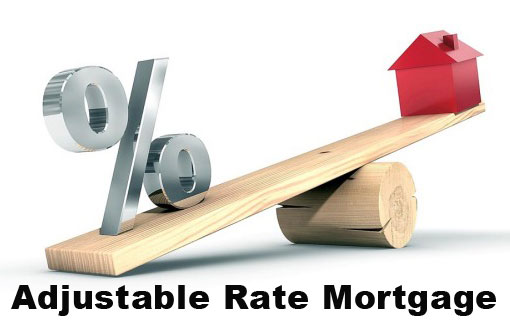7-Year ARM Rates Best For Modern Homeowners
Many Homeowners Skip Over 7 Year ARM Rates
If you’re looking for a house but expect to be in it only for a limited time, you might pay more with a standard 30-year fixed mortgage than you require to.
A 7-year adjustable rate mortgage (ARM) could lower your monthly expenses and give you options down the road.
Many home buyers and refinance consumers too-quickly dismiss an ARM as an option. The rate and payment will eventually change – higher or lower – and that can be unsettling. According to mortgage software company Ellie Mae, nearly 95% of homeowners opt for a fixed-rate loan.
But an 7-year ARM could be a “good risk” for mortgage consumers. It offers low rates, and two additional years of fixed payments compared to the more popular 5-year ARM.

That extra time to sell or refinance could be the sweet spot for those who will not keep their home the full thirty years.
And in today’s mobile society, that’s most homeowners.
Homeowners Do Not Keep Their Mortgages Long
The rule-of-thumb is that home buyers stay in their homes an average of seven years, though there’s question about the exact amount.
A National Association of Home Builders study suggested the typical home buyer stays 13 years.
Either way, the general message stays the same. You’re likely to move before you retire your 30-year mortgage. That makes the home a medium-term investment.
If you don’t see yourself in the same house indefinitely, you may want to change how you shop for a mortgage. A 30-year fixed loan locks in the interest rate for decades, but it comes with higher rates and payments compared to an ARM.
Instead, a home buyer could use 7-year ARM rates to spend less money during the time you’re in the home.
Elements Of An ARM
An ARM is a type of mortgage that typically offers a very low interest rate, fixed for a specific period of time.
After the initial fixed period, the rate can adjust the based on the current market. There are six factors to consider according to the Consumer Finance Protection Bureau.
- Initial rate: the interest rate during the initial fixed-rate period
- Adjustment period: how often the rate changes after the initial fixed-rate period
- Index: a market rate that is used to calculate the new mortgage interest rate when the loan adjusts
- Margin: the amount of interest rate percentage points added to the index to determine the new mortgage interest rate
- Interest-rate caps: limits on rate increases during the adjustment period and life of the loan
- Payment cap: a limit on the amount the monthly payment can increase
At the end of the initial fixed period, your new rate would equal the index plus the margin. The index can change, but the margin does not.
With a seven-year ARM, you would look at the index as you approach the end of the first seven years.
If the index stands at 3.1 percent at that time, and the margin for your loan is 2.25 percent, you would start your first adjustment period at a 5.35 percent rate.
7-year ARM Loans Offer Built-In Savings, Protections
A 7-year ARM is one with an initial fixed period of seven years. The rate can’t change during that period.
For many homeowners, that time frame will exceed the length of time they keep the house or mortgage. Remember, even if the homeowner doesn’t sell, there is a good chance they will refinance just a few years after purchasing the home.
If you expect to move or refinance within the 7-year fixed period, an ARM can be much less expensive choice than a 30-year fixed mortgage.
According to Bankrate averages, seven-year ARM rates are more than 0.50% lower than thirty-year fixed-rate loans.
That would mean a savings of over $8,000 in interest over seven years on a loan of $250,000.
What if your plans change and you stay in the home or mortgage more than seven years? The 7-year ARM still might work well.
The lifetime cap acts as a firewall on ARMs. Even in the off-chance of a skyrocketing interest rate market, you are largely protected.
For example, an ARM with a 3 percent initial rate and a 5 percent lifetime cap can’t rise above eight percent. That limits additional expense if the future market is slow for selling. And if it looks as though you’ll stay in the house indefinitely, you may have the option to refinance into a fixed mortgage.
What Are Today’s Rates?
Adjustable rate mortgages make homeownership ultra-affordable. ARM rates are well below fixed rates, which themselves are at historic lows.
Home buyers today should request rate quote for both an ARM and a fixed rate and weigh the advantages of each.
